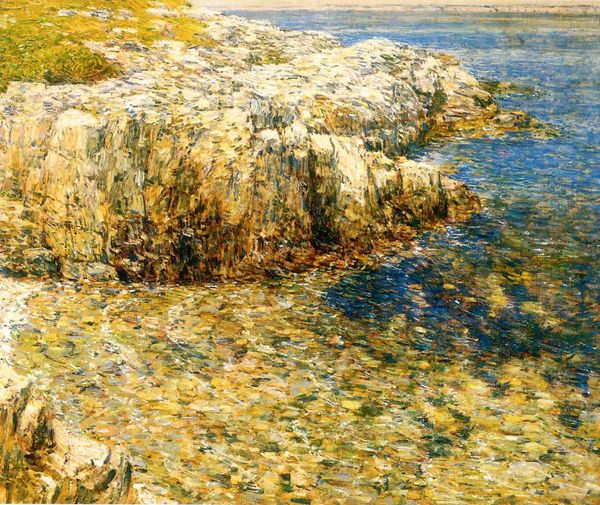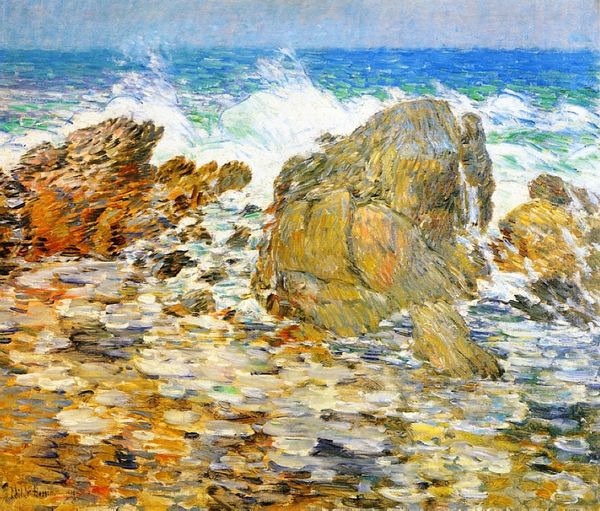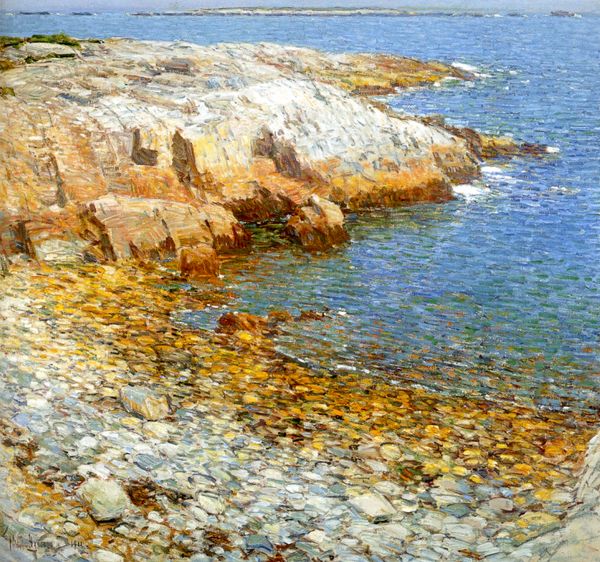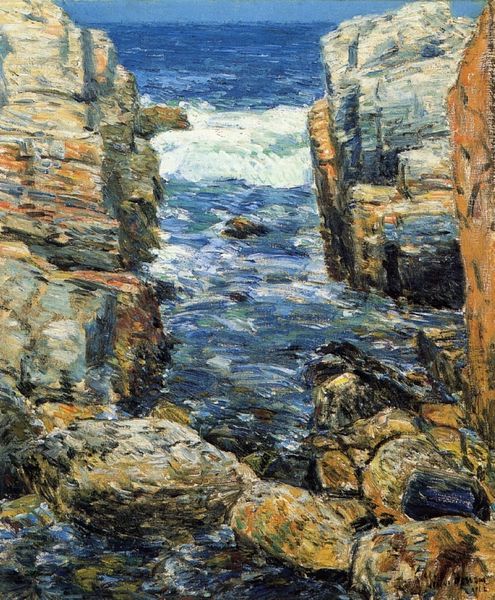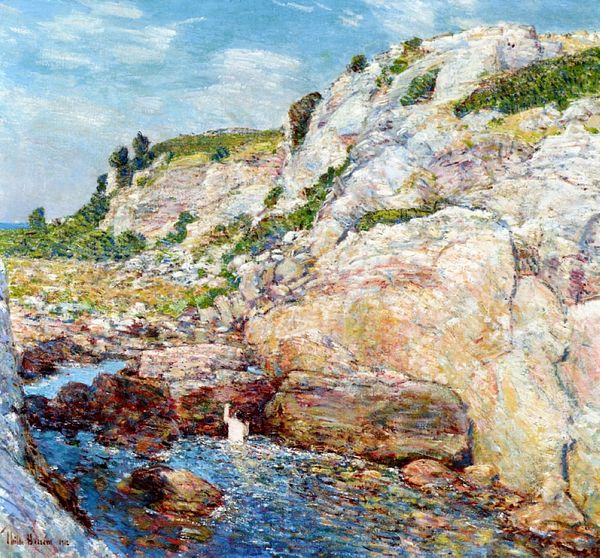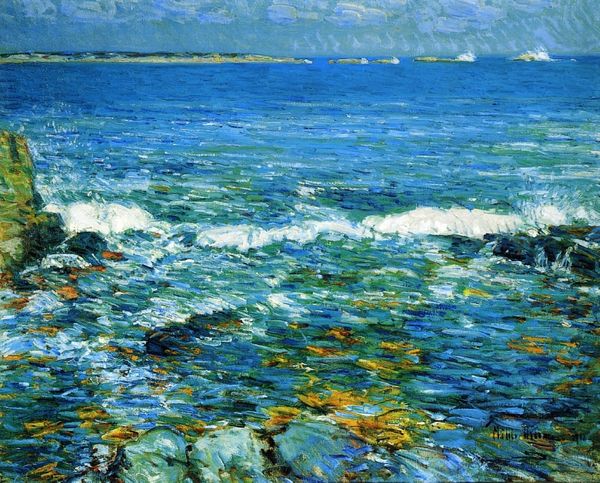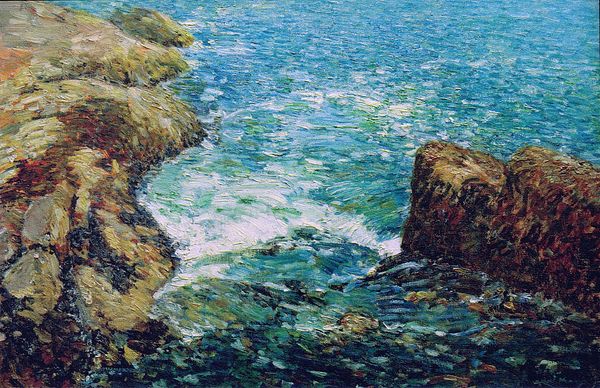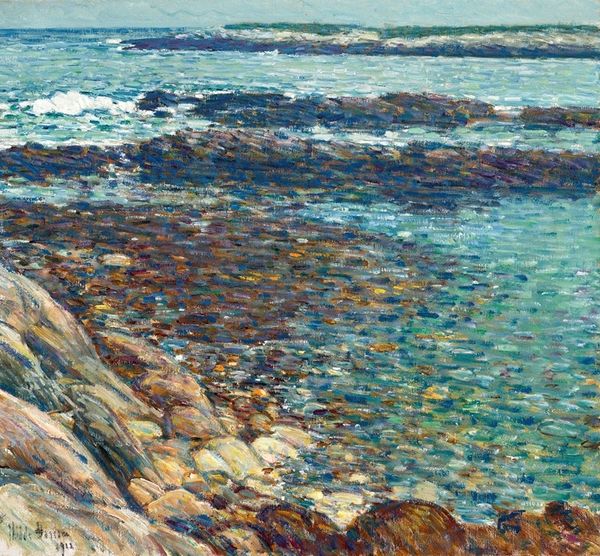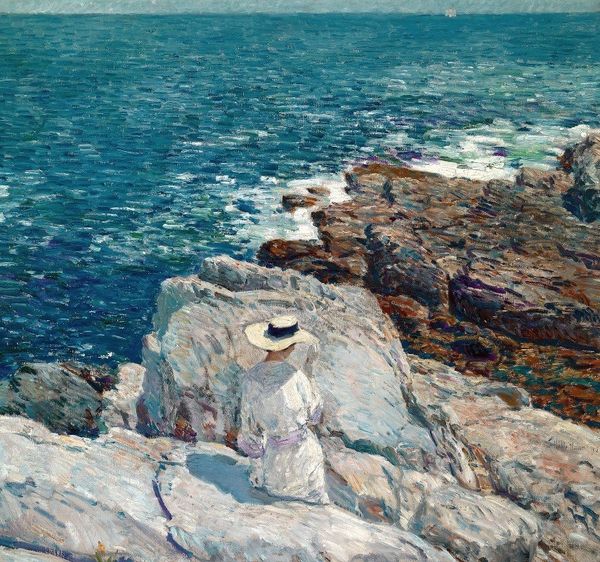
Copyright: Public domain
Curator: Childe Hassam's "Jelly Fish," painted in 1912, presents a striking view of the New England coastline rendered with an intense impasto technique in oil on canvas. What's your immediate response to this work? Editor: My first thought is 'power.' There’s such an immediacy here; I can almost feel the spray of the ocean against those imposing, white rocks. Curator: I’m struck by the texture, by the sheer labor involved in layering those strokes to conjure light and volume. It’s the work of a dedicated plein-air painter grappling with the conditions of production. Editor: Indeed. And I think we also need to look at the context of Hassam's work at that time. It’s painted during the early 20th century in the U.S., amid growing social and political changes. What might seem like just a natural scene resonates differently when considered alongside growing concerns about industrialization and conservation. The rocks appear stable and unyielding. Curator: He certainly showcases an intimate knowledge of his materials: the thick paint, the varied brushwork from feathery strokes to blunt stabs creating a convincing texture. The physicality of the paint itself becomes the subject. Editor: I agree. Hassam was a skilled artisan with a remarkable dexterity; but the artist and artwork did not arise in a vacuum. Who had access to those landscapes and materials at that time? And at what price? I can’t help but think of how the landscape tradition of painting often omits questions of access and ownership. Curator: I suppose what is missing are figures involved in any labor on this landscape; or references to infrastructure. You can see how Hassam favors immediacy, focusing on the raw beauty of the landscape, the dance of light on rock and water; while emphasizing its production as an art object rather than an artifact for leisure. Editor: Exactly, the rocks rendered almost blindingly white; the sky a wash of cool hues—all speak to this sense of preservation, of something enduring. Yet the constant shift in weather as rendered by these visible and intentional brushstrokes suggests both power and instability. For Hassam to depict it serves to acknowledge that change. It serves as a subtle acknowledgment of transformation during a turbulent period. Curator: Well, regardless, “Jelly Fish” remains a testament to Hassam’s remarkable engagement with materials. I think that is important for an analysis, whether it be within or without cultural criticism. Editor: And I will remember this not only for the rich and beautiful texture, but its commentary on an era where industrial progress both allured and threatened the natural landscape.
Comments
No comments
Be the first to comment and join the conversation on the ultimate creative platform.


